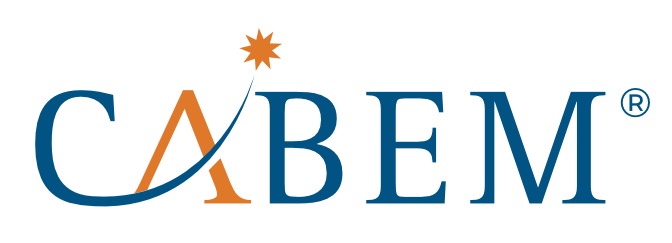Credentialing is the “verification of a person’s education, training, and experience” according to the compliance company HCPro. This process to make sure that individuals have the proper documentation and are proficient in performing their duties is necessary to keep organizations compliant. Whether you’re tasked with renewing your own staff’s qualifications, need to verify vendors’, or both, keeping necessary credentials valid and up to date is crucial. Most often used in the healthcare field, an individual needs credentialing if he or she is “In general, any licensed, independent, healthcare professional who has been permitted by law and regulated by a licensing organization to provide services and care…” according to the NCBI (National Center for Biotechnology Innovation) working with the NIH (National Institutes of Health).
While credentialing is most often discussed in the healthcare field, it is also a necessity in many other industries including law enforcement, manufacturing, construction, finance, and more. In some cases, employees are tasked with assessing themselves. In others, a team within an organization, such as an HR department or Compliance Group, is designated to handle skills assessments and the credentialing process for its members. In either case, the credentialing process is far from easy and can be a time-consuming and tedious task. Managing certifications usually requires that an organization keep a record of an individual’s expiration dates, certification requirements, compliance with any regulation changes, and often much more, for all of its members.
Taking extra precautions in your credentialing program is especially vital given the many regulation changes in recent years. “Over the past 20 years, the credentialing process has become complex and onerous primarily due to the expansion of the provider scope of practice, accrediting bodies, and requirements of third-party payers like Medicare, Medicaid, and private insurers,” according to the NCBI.
While credentialing is not a novel concept, it has evolved greatly over the years and gotten increasingly more complex. In order to make the process as stress-free as possible, it is important to be aware of common pitfalls and how to avoid them.

Five Common Mistakes to Avoid in Credentialing
Not Starting Early Enough
Contacting the many sources for credentialing verification means you need to start the process early. It’s best to give yourself at least 150 days ahead of the credential expiration date for the application to be processed. Keep in mind that working this far in advance can bring its own challenges, as it means you are constantly processing credentials for different team members at different times and must have a method for managing your ever-rotating calendar of expirations.
Not Paying Attention to Details
Errors documented on an application can prolong the credentialing process or lead to denial of certification. Practice information such as the address, phone number, services provided, employment history, copies of licensure, and documentation of any legal troubles involving the practice will be requested on the credentialing application. Before it is submitted, the credentialing document should be thoroughly reviewed by more than one person to ensure accuracy, prevent any incomplete information, and ensure there are no issues.
Missing Credentials
For organizations that are credentialing their members with a paper-based system, or even a system with an Office suite such as Word Documents and Excel spreadsheets, it can be difficult and cumbersome to track down the appropriate documents when necessary. Individuals with different filing conventions or document titling may take longer than expected to find their proper credentials or lose them altogether. To remedy this, agree as an organization to store the documents in an agreed-upon content manager, such as in cloud-based software, and use consistent naming structures.
No Continuity of Data
When credentialing is completed manually or by multiple people, even with consistent naming it is very likely that the documents are in different places on each respective computer or filing cabinet. If a key staff member leaves and does not properly transfer their documents to the replacement, it is common that some data will be lost in the process.

Not Enough Resources Dedicated to Credentialing
Credentialing can be a complicated and tedious process. Make sure you have allocated enough staff and provided them with the tools they need to do the job properly. This process may require multiple team members or even a whole department, depending on the size of the organization and credentialing requirements.
Failure to Follow Up with the Application
Take every step possible to confirm receipt of the application, see if it is being processed properly and if there are any mistakes that need to be resolved. Do not rely on them to contact you, and keep in contact with the assigned personnel throughout, to help catch any issues in advance.
While these common mistakes and issues can cause legal challenges for an organization, they can easily be avoided by switching from a manual or paper-based process to an automated one with software. Let’s take a look at how software can lead to a more efficient credentialing program. And if you are interested, read our article on the best credentialing software programs available today.
Credentialing Software Eliminates Prevalent Problems
Credentialing software is a cloud-based system that allows your team to easily manage credentials and CMEs, set notifications for expirations and renewals, and access documentation, all from a centralized platform.
By implementing credentialing software, the process becomes automated, relieving you and your team of the ongoing responsibility of searching through old paperwork, trying to contact team members and the other manual tasks that can be involved with credentialing management.
With a software system in place, it is much more likely that an individual person or at least a much smaller team can handle this process, which frees up team members to work on other priority matters. This go-to person or team needs to be thoroughly trained in the software program that you implement and will often communicate with the software vendor as needed.

Learning Management Systems (LMS) and Credentialing
The best credentialing software programs also come equipped with the ability to conduct training within the platform, helping your employees learn the necessary information and take the proper classes to be credentialed. Each business is different, but inadequate training is a challenge that’s faced in any industry. And when it comes to credentialing, not having a properly trained workforce can lead to future legal problems for your organization.
By inputting the training requirements for specific roles and even locations or departments into the credentialing software program, all individuals can be automatically assigned any tests or assessments they need and can read about regulations by state or accrediting body if need be.
The team can then take the proper tests and training to learn the information and be approved, with a record of completion all kept within the system. The software can also make it easy to adjust the requirements, so if state regulations or role requirements change, you can easily update the information, reassign the necessary testing, and be confident that your team is still compliant.

The lack of comprehensive tools to track credentials often leaves healthcare facilities facing expiring credentials or other compliance issues. With credentialing software, an organization can automate the process of scheduling multiple alerts for specific days that credentials need to be updated, and can automatically send messages to relevant employees to remind them of work that needs to be done on their end.

Transitioning from paperwork and manual tracking of credentials to a software system simplifies your day-to-day, saves time, and allows for better future planning. You can avoid the most common credentialing challenges and eliminate complications in a much more efficient and effective way with software.
CABEM’s Credentialing System
At CABEM we understand the difficulties organizations can face with the process of managing and tracking credentials, which is why we created software to address this problem.
Our solution is called the Competency Manager and can be used by organizations to manage the competency of their individuals by tracking credentials, storing documents, sending automated alerts, automating expirations and renewals, and conducting any training or assessments necessary. If you would like to learn more, please visit our website and schedule a call today

